For people looking to cut down on their carbon emissions but still need a convenient way to zip across town, an e-bike or electric scooter might be just the ticket. These devices make sense for essential short-distance travel, especially considering that public transit systems make it difficult to social distance. And we want to be clear, the devices on this list do not compare with the kids scooter you may have grown up with. These are legitimate electric vehicles with solid tires, a sophisticated braking system, a large battery pack, and the ability to cover semi-rough terrain.
After trying out different types of battery-operated rideables, I’ve learned a lot. Some were tested before the coronavirus outbreak, while other rides are more recent — all have been on trips through sections of midtown Manhattan, around Central Park or down the West Side Highway bike path.
Read more: The best e-bikes to ride in 2021
This roundup, which I’m updating as I review more products, covers electric scooters, foldable electric scooter options and skateboard-like devices. E-bikes get their own list. Why would you want a scooter over a more traditional bike? Electric scooters are nimble and smaller, and are easy to take on mass transit, leave in the trunk of your car or store at home.
I’ve included water-resistance ratings when available for each electric scooter. IP ratings (IP stands for ingress protection) let you know the dust or water-resistance of a product. For example, if something has an IP54 rating, the first number after the letters refers to resistance to solids while the second refers to moisture. Read more in our IP rating explainer.
Here’s some of the best electric rideables available right now
See all photos
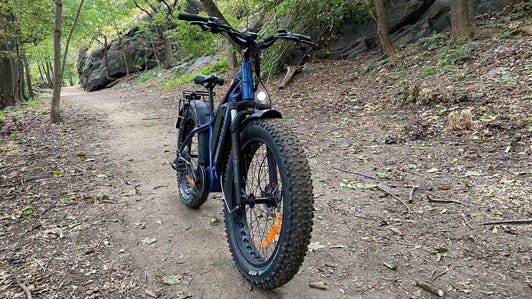

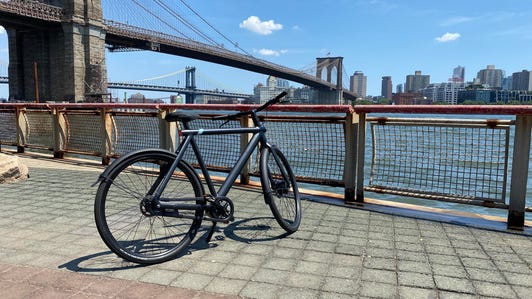
+39 More
Also, and let’s not make a big deal of it, but I exceed the rated weight capacity for most of these products. For the most part, they all still performed as expected, though maybe with a little less range or speed. No devices were harmed during this roundup.
Lastly, if you plan on getting into rideables, be safe about it. Leave enough space between yourself and both cars and riders on plain old human-powered bikes and scooters. Remember you’re able to go a lot faster, so ride and pass with caution. Make sure to charge your battery and check on your tires. And, most important, always wear a helmet when you ride.
High-end features and extras at a competitive price
Varla Eagle One

Joseph KaminskiThe Eagle One makes this list because Varla found a way to build a quality electric scooter with similar specs to many currently on the market, while keeping the price competitive at $1,599. And it even comes with some cool accessories.
The 77-pound scooter rolls on 10-inch pneumatic tires with dual 1,000-watt brushless motors powered by a big 52-volt, 18.2Ah lithium-Ion battery. Rated top speed: 40 mph. I was only able to get up to about 33 mph but my lighter girlfriend hopped on and hit 37 mph. The Eagle One supports a total weight of 330 pounds but is recommended for riders up to 265 pounds.
On a single charge you can get up to 40 miles of travel, but I only reached about half of that. I ride aggressively, though, switching between dual- and single-motor modes and staying in its top gear. Staying with a single motor and at slower speeds will always get you farther, but I like a little speed. The scooter can be charged in about eight hours with a single charger and just under five hours connected to a second charger.
There’s a lot of common ground between the Varla Eagle One and its high-end competition. It has three gears, single- or dual-motor modes and an Eco button to help conserve battery. You’ll also find dual-spring suspension, a wide deck with front and rear lights and dual hydraulic brakes that outperform their wired counterparts and require less maintenance. It even has a USB port in the odometer to charge your phone while you ride.
Varla also throws in some extra gear like three additional grip tapes with different designs (I’m currently using one with a flaming skull), a spare inner tube, wrist guards and elbow and knee pads. All you need is a helmet and you’re ready to ride.
Ghost be nimble, Ghost be quick
Apollo Ghost Electric scooter

Joseph Kaminski
The $1,499 Apollo Ghost is a great scooter for both beginners and long-time riders. With dual 800-watt motors, beginners can start off slowly using just one for smoother, softer acceleration. Once you get a feel for it, you can turn on the second motor for 1,600 watts of power and more aggressive performance.
The Ghost feels quick and nimble due to its slightly smaller size and its 10-inch pneumatic tires. It also has front and rear spring suspension, which allows the scooter to ride smoothly even on bumpy surfaces. It was one of the only scooters I’ve tested that was fast enough for me but could be dialed back for my 12-year-old son to ride and chic enough for my girlfriend. The deck was also long enough to take my 7-year-old daughter around with me on errands.
The scooter is solid, mostly comprised of forged aluminum, and alone weighs 64 pounds. While that’s only 13 pounds lighter than the 77-pound higher-end Apollo Pro, believe me, it makes a difference when carrying it for any period. The handlebars and steering tube are collapsible making it easy to transport. I especially like the high handlebars that make it more comfortable for taller riders like myself and the locking ergonomic grips are a nice addition as well.
Riders up to 300 pounds are supported and the scooter can hit a top speed of 34 mph. There are three gear modes along with an Eco mode. Depending on the rider size, terrain and setting preference, the Ghost can run for up to 39 miles on a full charge. I was able to get around 20-plus miles going from single to dual-motor mode. The scooter’s 52-volt, 18.2aH battery can be charged in about eight to 10 hours. There is an option to cut charge time down with a single fast charger or using two standard ones. The Scooter itself has dual charging ports.
The model I tested had mechanical disc brakes, but Apollo said there will be a hydraulic-brake version coming out this spring. The Ghost has lights in the front and rear of the deck and the rear lights flash when braking. They help at night, but at this level I would like to see an actual headlight up near the handlebars. (For models that don’t have a headlight, I use a Blackburn Countdown 1600 light so I can see more of the road ahead and I’m more visible to drivers.) The Ghost does have a blue light underneath which helps some with visibility and looks cool, too. It also ships with a bell to warn pedestrians, but it doesn’t quite cut it in the city where a horn is almost a necessity.
A display next to the finger throttle shows battery level, current speed, the gear you’re in and distance traveled. It’s visible in direct sunlight and even has a USB port to charge a mobile device or GoPro. There is also a voltage display to help monitor the health of the battery. The Ghost has a key ignition and spots to attach a lock on the frame for added security when running errands. Also, while I wouldn’t leave it out in the rain, the Ghost has an IP54 rating so some splashing isn’t a problem. Plus, it has small front and rear fenders to keep you clean.
The $1499 price is only good until March then it will go back to its original price of $1599. Shipping is free in the continental United States and Canada. They back their products with a 1-year warranty and are a Canadian based company with multiple service centers across the US. And if for whatever reason you need to call them you can speak with a real live person.
There’s a lot to like here. I even like the kickstand placement in the center of the deck, which is more convenient when you step off rather than at the back. Its current price of $1,499 only lasts until March, though; the Apollo Ghost’s regular price is $1,500. Still, it can compete with pricier models.
An affordable scooter that goes further than the last mile
Veo Astro Go

Joseph KaminskiVeo, formerly known as VeoRide, is a Chicago-based company that, pre-pandemic, exclusively provided a ride-sharing service that consisted of bicycles and scooters. Since then they’ve expanded into retail with a new scooter, the Veo Astro Go.
At 48 pounds, the $650 Veo Astro Go isn’t the lightest or heaviest scooter, and its travel distance of 30 miles (I got about 18) isn’t the shortest or farthest — it’s fairly middle-of-the-road for the money. Lighter scooters are great for carrying on a train or bus but typically require more frequent charging due to their smaller batteries. Also, because travel distances are calculated with specific rider weight, speed and terrain, these are really just a guideline. Still, I found it to be a great last-mile scooter to make either end of your commute more enjoyable.
The scooter is collapsible, making it easier to transport and store. There are three riding modes — Eco, Drive and Speed — and an overall top speed of 16 mph. This is made possible by its 500-watt motor and 13-Ah battery. (It takes about 5 hours to fully charge from empty, by the way.) What’s nice is the Astro Go supports riders up to 265 pounds; most top out at 220 pounds, so the extra support is good for heavier riders and those who regularly carry a bag — something I always seem to be doing.
There is front and rear suspension, which makes for a smoother ride and is a rare feature on smaller scooters. In terms of safety, the Veo Astro Go is excellent with a headlight that’s mounted high — a must for anyone riding in low-light situations. I’ve reviewed pricier scooters that only have lights in the deck, which is fine for seeing the ground but not for seeing the road ahead or being seen in traffic. There are also two taillights that are visible in daylight and work as turn signals. While turn signals are showing up on more scooters lately, the Astro Go’s main display actually shows a turn indicator, the same as you would have in a car. It’s also somewhat of a necessity since the signals don’t automatically shut off when you turn. Lastly, there’s an integrated bell to alert pedestrians, because the scooter itself runs nearly silent.
Overall, the Veo Astro Go is a great scooter to take you farther than that last mile. It’s a bit heavy, but the smooth ride, great handling, solid construction and safety features make up for it. If you’re interested in ordering one, you’ll need to do it through the Veo app for iOS or Android.
Like something out of the Jetsons
InMotion V10F
Joseph KaminskiThere’s something addictive about riding around town without having to use your hands for support and simply hopping on and off your ride. That’s the experience you get with the $1,499 InMotion V10F, a simple and reliable piece of transportation tech that’s a small, fast and easy to store electric vehicle.
The V10F is an electric unicycle that packs a lot in its 45-pound frame. It has a 2,000-watt motor powered by a 960Wh battery that can move you and its 16-inch wheel up to 25mph (I was able to hit 24mph in my testing). It’s rated for travel distances up to 60 miles on a single charge; it takes about 8 hours to fill the battery. I got about half that distance due to my large frame and need for speed. It supports riders up to 260 pounds.
The unicycle is designed to self-balance forward and back while the rider is responsible for the side to side. Once you get a little momentum, the side to side is a breeze. It’s easier to learn than you might think. If you hold onto something (such as a handrail), you can then slowly go back and forth just a few inches to get a feel for its responsiveness and what it takes to keep it balanced. There are plenty of videos online, too, that can show how to mount and dismount along with other tips and tricks.
When I started riding, I let some air pressure out of the tire so it wouldn’t accelerate too fast. This makes turning a tad more difficult, so once you get the hang of it, you’ll want to top off. I was zipping around in about 30 minutes.
On some inclines, it lacked the torque needed to take off from a standstill position, but when I had some momentum it was no problem. The V10F even performed well in the rain. I wouldn’t submerge it in water but getting caught in the rain every now and then won’t damage the device, which has an IP55 rating. The footpads have a good grip to them and are a nice size even for my size 12 shoes.
The V10F has a built-in Bluetooth connection that allows you to connect to it through an iOS or Android app. With it you can honk the horn, toggle the head and tail lights on and off, see your current speed, adjust the top speed, see the total distance traveled, the motherboard temperature and more. There’s also a social aspect that lets you locate other riders to share images and comments.
Two nice extras: The V10F has sidelights that can be set to flash or pulse so people can see you coming, and the internal speaker lets you play your favorite tunes from your phone, making riding around safer than using headphones. But as always, you should wear a helmet at the very least.
This scooter keeps going and going and going
Emove Cruiser Electric Scooter

Joseph KaminskiNot all scooters are created equal. The $1,399 Emove Cruiser makes this abundantly clear. One of my first times riding this e-scooter I kept looking at the battery indicator expecting it to move; it didn’t move an inch for miles. I’m a heavy guy and I’m also heavy on the throttle, but I’ve learned to ease off of it if I want to make it home. That’s not the case with the Emove electric scooter — it just keeps going.
Keep in mind that these batteries can only be charged so many times before they no longer perform at an optimal level. That means the less you charge your device, the longer the e scooter battery will perform at its peak. That alone was more than enough for this scooter to make the list, but that’s not all.
The Emove Cruiser has a wide deck, making it easy to stand in a staggered stance or side by side. It can support riders up to 352 pounds, hits a top speed of 25 mph and can travel approximately 60 miles on a full charge. The adult electric scooter takes about 8 to 12 hours to fully charge. It has 10-inch pneumatic tubeless car-grade tires, front dual suspension and rear air-shock suspension, all of which makes for a smooth ride. The acceleration is smooth enough that you can take off with one hand, though I wouldn’t recommend it. The takeoff can also be adjusted for a more aggressive start if you want.
The scooter has a single-hinge, fold-down knob along with collapsible handlebars, which makes it convenient for storage. It weighs 52 pounds — most of it battery — so it’s not the lightest. A key is needed for ignition and there are front and rear lights along with independent lights on the deck for added safety. It even goes a step further with an electric horn and signal lights. The signals aren’t as visible during the day but are still a welcome addition.
Another useful design feature: The Emove has an IPX6 rating so you don’t have to worry if you get caught in the rain. It also has fenders long enough to keep you dry when rolling over wet surfaces.
Best electric scooter for modest budgets
Swagtron Swagger 5 Elite

Sarah Tew/CNET
The Swagtron Swagger 5 Elite is the least expensive e-scooter product on this list, and that’s its greatest feature. This folding e-scooter doesn’t outperform any of the products mentioned here, but at $299 it’s hard to complain about it not being the best electric scooter in the overall marketplace. It has a single 250-watt motor that doesn’t put out much torque but can reach a smooth ride speed of 14 mph to 16 mph. The listed travel distance is approximately 11 miles on a fully charged battery, with a lithium-ion battery that will charge in 3.5 hours. The maximum weight supported is 320 pounds and the e-scooter weighs 26 pounds. Although it supports larger riders, due to its low-powered motor, you may get a slower takeoff and slowdowns on inclines. It may also lose its charge faster.
Scooting in the water for less
Geneinno S2 water scooter
Joseph Kaminski/CNET
The compact $399 Geneinno S2 scooter is built for use in the ocean, lakes and in pools: Its 350-watt brushless motors can propel you through the water at up to 2.7 mph. It might not be a top e scooter speed demon, but its 97 watt-hour battery delivers approximately 45 minutes of use, and can take you down to depths up to 98 feet. Its included magnetic charger takes about 2 hours to top the battery off.
The S2 works with an iOS/Android app — you connect to your phone via Bluetooth — to track dives and has parental controls so the little ones can use it, too. I could easily see this being used to help kids learn to swim or just get them used to the water.
Also, while the scooter is designed to be used with two hands, you can switch to a one-hand mode. There is a camera mount at the front of the device to attach a GoPro or light. The scooter floats on its own in case you need to let go for a second, and its bright orange color is easy to spot.
The Geneinno S2 may not be the fastest or most powerful water scooter, but the lightweight electric scooter weighs only 5.9 pounds and fits in a backpack, making it a good pick for flights to vacation getaways.
A cool and cost-effective scooter
Levy Electric Scooter

Sarah TewThe Levy Electric Scooter slides into this list due to its price-to-practicality ratio. An electric lightweight scooter that can hit 18 mph, costs around $500, weighs just under 30 pounds and has a removable battery is a pretty good all-around deal. Levy also has scooters available for rent through its iOS and Android app.
The Levy has air-filled tires that make for a comfortable ride. The battery is located in the steering tube, unlike a lot of other scooters, so you get some body flexibility similar to a longboard for those bumpy roads. I really appreciate that the battery is removable as well. Anyone with a yard or stairs can leave the e-scooter locked, and remove the battery to take inside to charge.
The Levy lightweight scooter is rated to travel about 15 miles on a full charge but that’s not at top speed. I would say most riders would get realistically about 7 to 10 miles. But because it’s removable, you can buy a second battery for $149 and carry it with you.
For a closer look, check out our gallery of the Levy Electric Scooter.
Best for keeping cool and your distance
AquaRobotMan MagicJet Seascooter

Sarah Tew/CNET
OK, this is a little out of the wheelhouse here, but the MagicJet is an electric scooter for the pool or the ocean, or any other body of water you’re swimming where you might want a speed boost.
With a top speed of 4 mph and rated for depths up to 164 feet (50 meters), you’ll be able to keep your distance. It weighs just under 8 pounds but floats, making it easy to locate on the water along with the bright yellow 155Wh battery.
There are two modes — low and high — and depending on usage the battery will get you approximately 60 minutes of use. If you’re in fresh water, you can swap the battery without drying off, just as long as the scooter is turned off. The battery indicator and the power switch are at the rear of the device, making it easy to see how much juice you have left while you’re using it. It has enough power to tow two people with its 600-watt motor, but that does change the experience.
The MagicJet can be used with a dual-handle attachment, which makes it easier to whip around. You can also remove them and opt for single-handed piloting (see photo), or you can leave the dual handles attached and just switch from one hand to two. Removing them is better when you pack it up for travel. It’s environmentally safe for all ocean creatures and has three camera mounts to capture your underwater experience.
Go further for less
Segway Ninebot KickScooter Max

Sarah Tew/CNET
The Segway Max is a reliable electric scooter that can take you very far. It’s rated to go 40 miles on a full charge (if you’re driving slower and on flat ground), which is a bold claim by Segway. In real-world conditions, I was able to go 7 miles on this electric vehicle (my daily commute before working from home) at top speed using 45% of the battery. That’s still pretty good considering the scooter itself is rather hefty, weighing 41 pounds, and I frequently got it up to 18mph.
The air-filled tires make for a more comfortable ride than the ES series from Segway. One feature I really appreciated was the charging cable. It’s a generic power cord with no brick, making it easy to carry around or replace. The 551-watt-hour battery can be fully charged in 6 hours.
To stop, electric kick scooter riders can just use the handbrake. There’s also a bell built into the handlebar to alert pedestrians you’re coming. And if you’ve got big feet, like I do, you’ll love the long riding deck, which gave me plenty of room to get comfortable.
Best electric scooter for long hauls
Ninebot by Segway ES4

Sarah Tew/CNET
The ES4 Kick Scooter sits atop the Segway consumer scooter chain, with a secondary battery to make a long-distance ride or a lengthy ride time a breeze. This electric kick scooter can travel an estimated 28 miles on a single battery charge, and the electric motor allows a top speed of 18 mph (which I was able to hit). The folding point on this e-scooter is different from the others in this roundup. The entire front post folds down, wheel and all. While braking, I would shift my weight back over the rear wheel, pushing down on the spoiler brake along with hitting the handlebar brake (which is an anti-lock brake), but without much of the front headtube flex you’d feel in some other scooters. There are also shock absorbers that help with shock absorption when you ride over bumpy surfaces.
The dual-battery model weighs just over 30 pounds, and it supports riders weighing up to 220 pounds. The scooter has some good power and can put out 300 to 800 watts depending on the riding mode. Single charge battery pack time is longer than the average, about 7 hours. If you run out of battery life and don’t have time to charge, it can also work as an old-fashioned kick-and-go scooter. It also sports some customizable LED lights under the deck between the tires. Those and some other settings can be adjusted in the iOS and Android apps.
Best for avoiding obstacles
Future Motion Onewheel Pint
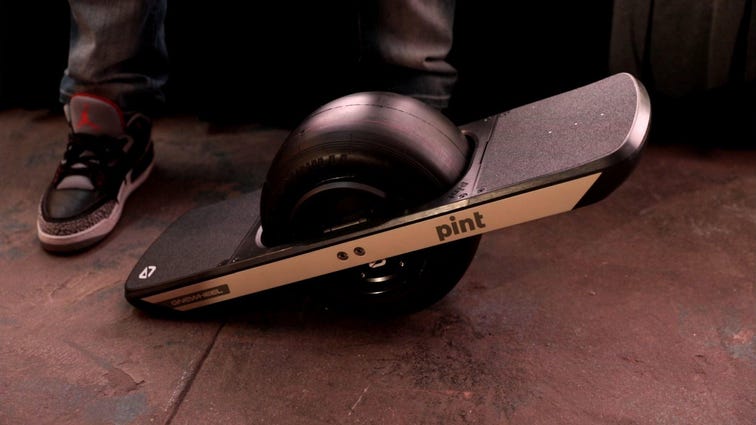
Mark Licea
The Onewheel Pint is $950, roughly half the price of the bigger Onewheel Plus XR, which costs $1,800. It weighs 26 pounds and supports riders of up to 250 pounds. The Pint can travel 6 to 8 miles on a full battery charge with the motor allowing a top speed of 16 mph. It’s more maneuverable than any previous Onewheel and most other rideables. It handles inclines with ease and sports rear and front lights for night riding. The board is operated by shifting your weight forward and back to move forward and back, and heel to toe to steer. Once you get the hang of it, it’s like riding a skateboard, and you’ll be tempted to pull off some tricks (which we do not officially endorse).
For a closer look, see our gallery of the Onewheel Pint.
Brains and beauty
Unagi E500

Sarah Tew/CNET
Premium scooter manufacturer Unagi adds new color customization options and a dual 250-watt motor to this update to last year’s E450 model, our previous pick for the best all-around electric scooter. Why call this one the E500? Because that’s the new total motor output wattage.
Due to the dual 250-watt motors, the E500 required a slightly larger battery (28.8 volts) than the E450 to maintain the same travel distance. It makes the carbon fiber and aluminum body about 2 pounds heavier, at just a hair under 27 pounds.
The display is bright and easy to see in sunlight and instead of sticking a bell on the scooter, they’ve put on an electric horn that’s loud enough to be heard through a closed car window.
The electric scooter can support riders up to 270 pounds, with a top speed of 18 mph and a travel distance of 15 miles. To stop the scooter just use the ABS electric brake or put a little pressure on the rear spoiler brake for those steep hills.
For a closer look at this electric scooter, check out our gallery of the Unagi E500.
You’re getting a beast for your buck
Mercane WideWheel Pro

Sarah Tew/CNET
The 2019 WideWheel made our list last year and it’s no surprise that the 2020 WideWheel Pro makes it this year. Living in New York, I see all types of scooters but none more than the commuter scooter, WideWheel. It’s a beast of an electric scooter and its performance-to-price ratio is hard to beat, even at $1,299.
Improvements can be found all over. For starters, it did away with the LED indicator lights and put in a full display that shows battery level, current speed and riding mode. In addition, they’ve upgraded the headlight for better visibility at night and added more comfortable ergonomic handgrips.
The Pro motorized scooter still sports dual 500-watt motors but can now hit a top speed of 26 miles per hour and it has an upgraded lithium-ion battery to help out. There are a lot of scooters on the market that can hit around 25 mph but the WideWheel gets up to speed faster. This scooter just wants to take off and is why I don’t recommend it for beginners. The company did, however, add a front disc brake to help bring this beast to a stop. It has two riding modes, Eco and Power, and an approximate travel distance of 20 miles.
The new WideWheel Pro comes with or without a key ignition switch. It feels more solid than the 2019 model — from the steering tube to the deck and handlebars. Both the handlebars and steering tube still fold down for transport or storage. The Pro weighs 54 pounds and supports riders up to 220 pounds (100 kg).
Another feature that may get overlooked in the Pro is that it comes with a spring suspension but with limited travel. True to its name, the 3.9-inch wide wheels make for some serious traction on dry surfaces. The tires aren’t air-filled (or comfortable), but the upside is the never-flat foam-filled tires won’t leave you stranded. Trust me, it’s no fun pushing a heavy scooter if the wheels let you down.
The WideWheel Pro is a powerful and stunning scooter. And as a guy that exceeds its weight limit, I was impressed with its torque and ability to get me to top speed.
Best electric scooter for speedsters
Mercane WideWheel (2019)

Sarah Tew
The Mercane WideWheel scooter is the best electric scooter when it comes to motor power in this lineup. Powered by dual 500-watt motors, it has some serious takeoff power and torque.
Most e-scooter models are locked to a top ride speed of 15 mph, but there’s an advanced mode where you can unlock its full battery power and ride it to 25 mph (but you do so at your own risk). It has a dual suspension and weighs a whopping 50 pounds. The range is up to 20 miles on a single battery charge, and it supports riders weighing up to 220 pounds. The riding deck is longer and wider than your average scooter, making it easy to get both feet on the board comfortably. It has an IPX4 rating.
The scooter gets its name from its 8-inch wide tires. The tires are great for staying upright during a ride, but turns take some getting used to with the tires. Unlike most of the honor-system devices here, this one needs a key to start.
Best for electric scooter for the cosmopolitan adult
Boosted Rev

Sarah Tew/CNET
Boosted is best known for its motorized skateboards, but it’s now getting into the e-scooter market with the battery-powered Rev, the best electric scooter for the sophisticated adult electric scooter set. This smooth ride has a powerful dual 1,500-watt motor and air-filled 9-inch pneumatic tires for a top ride speed of 24 mph. Due to its motor power and speed, it’s best as an electric scooter for adults — though if you’re looking for an electric scooter for kids, there are plenty of options out there.
The $1,599 Rev (with its pneumatic tires) supports riders weighing up to 250 pounds, which is 30 more pounds more in weight capacity than some other scooters in this list, which makes it the best electric scooter as far as weight capacity. Bonus: For those with larger feet, the board is wide enough to get them side by side.
For a closer look at the electric scooter, check out our gallery of the Boosted Rev.
Best hands-free premium experience
Future Motion Onewheel Plus XR
The Onewheel Plus XR is the bigger and older brother to the Pint. Still one of my motorized scooter favorites, due to the all-around freedom you feel when riding and the ability to travel 12 to 18 miles on a full charge of the battery, plus the motor lets you hit a top speed of 19 mph.
A nice feature found in the app, for iOS and Android, is while riding you’ll get a notification once the single-charge battery is at 50% so you can make it back home from wherever you may roam. The app offers a bunch of other settings from social to board riding customization. It’s not the most travel-friendly in terms of carrying around, it weighs about 30 pounds, but is easy to store. In addition, it only takes about 2 hours to fully charge the battery.
For a closer look, see our gallery of the Onewheel Plus XR.
Made to go the distance
Apollo Pro Scooter

Sarah Tew/CNET
Out of all the scooters in this lineup, this is the one adult electric scooter that can most closely replace your car. During the COVID-19 outbreak, the Apollo Pro made running errands and checking on the family the fastest and safest way to get around New York City.
This is a comfortable ride, due to its dual 10-inch air-filled tires and spring suspension, which you really need for a scooter that can hit 40 mph.
The Pro can travel close to 50 miles on a full charge and is powered by two 1,000-watt motors. You can ride the electric scooter in single- or dual-motor mode (balancing longer life versus more power), or get extra-green with an eco mode.

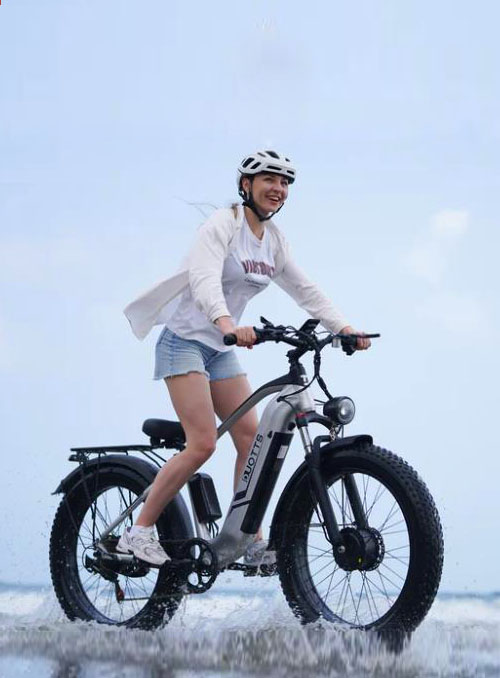


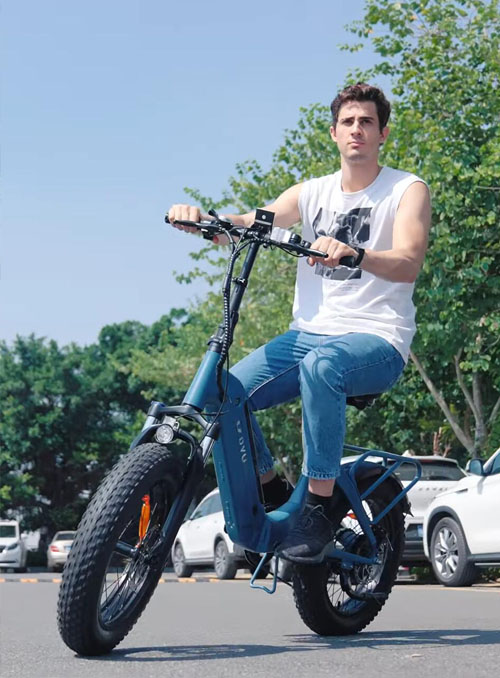
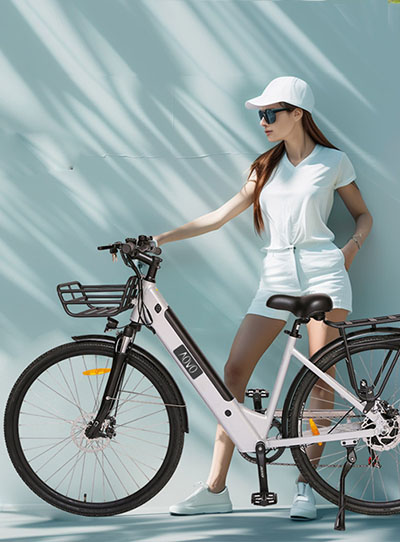
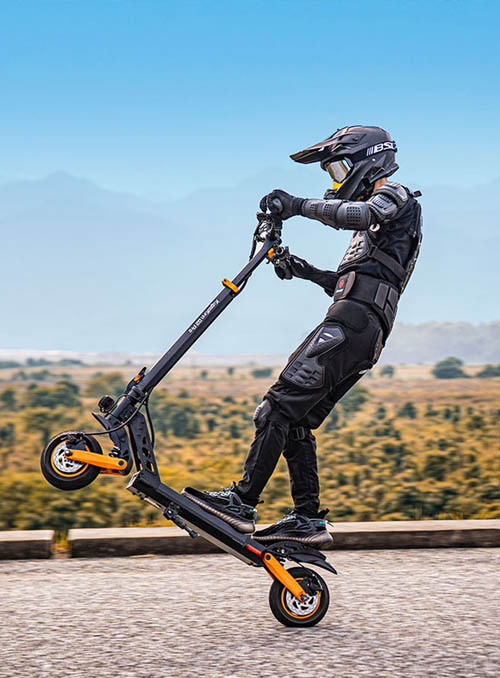
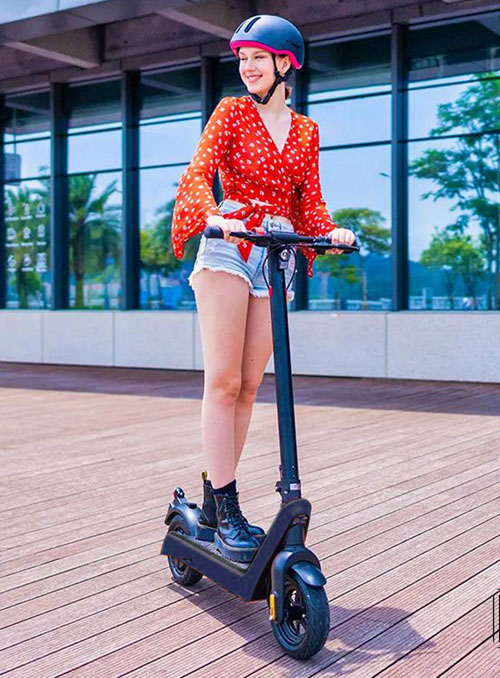

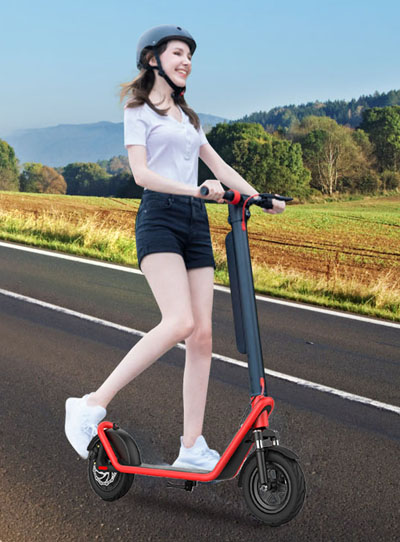
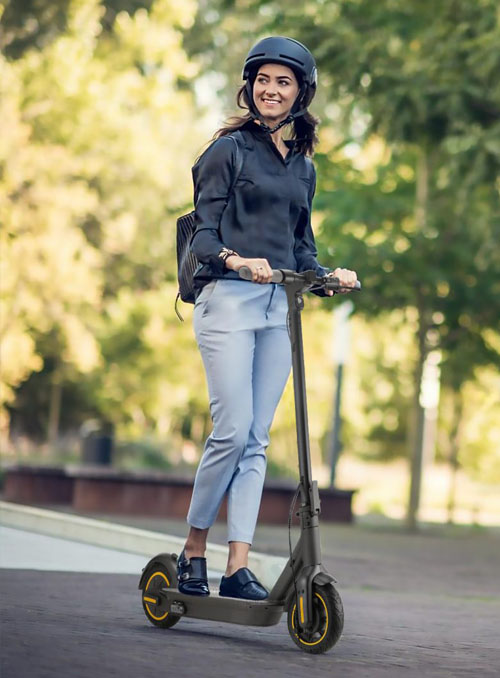
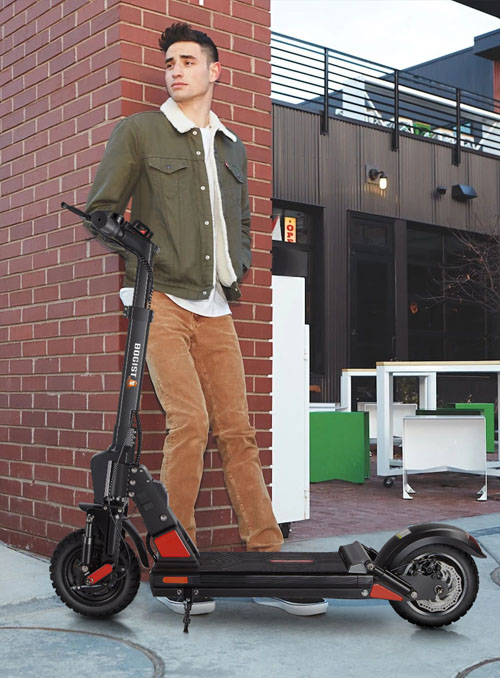
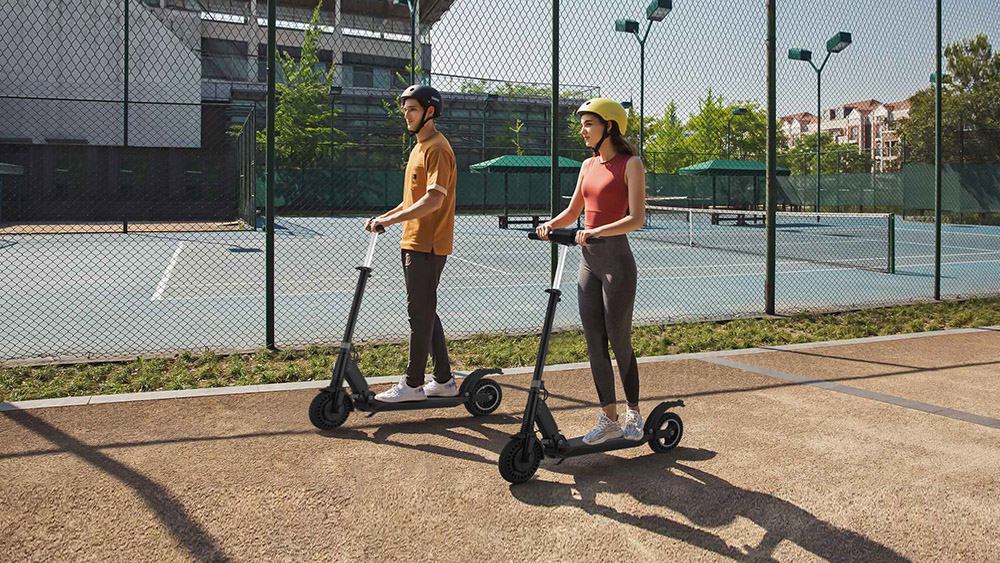
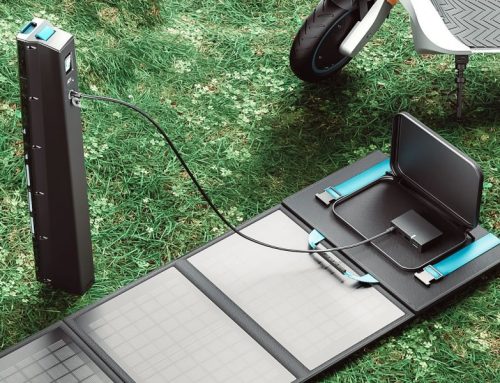
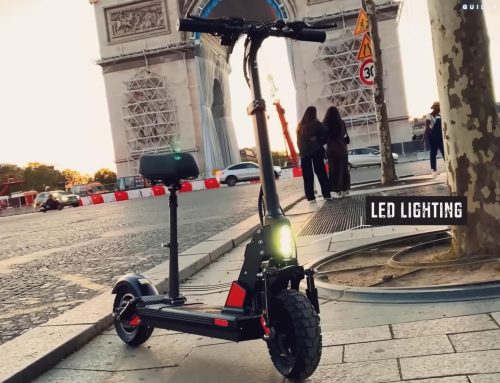
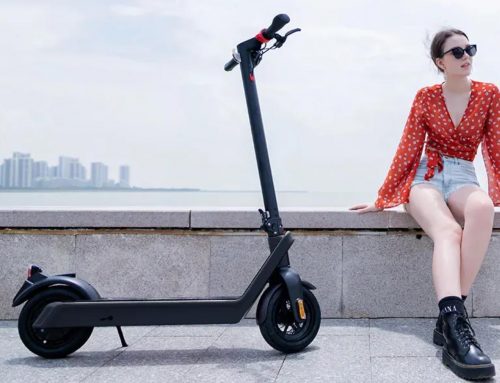
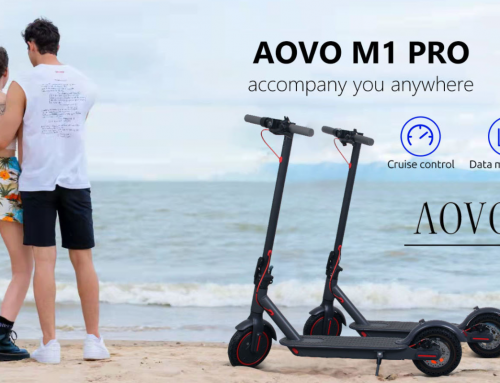
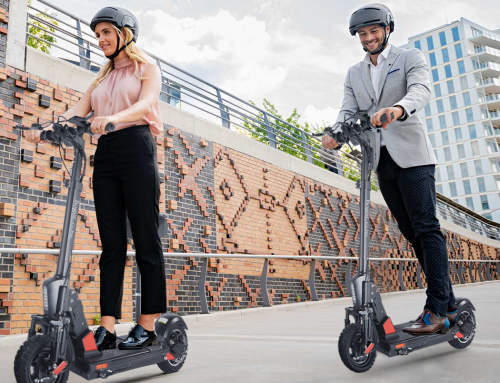
Leave A Comment
You must be logged in to post a comment.